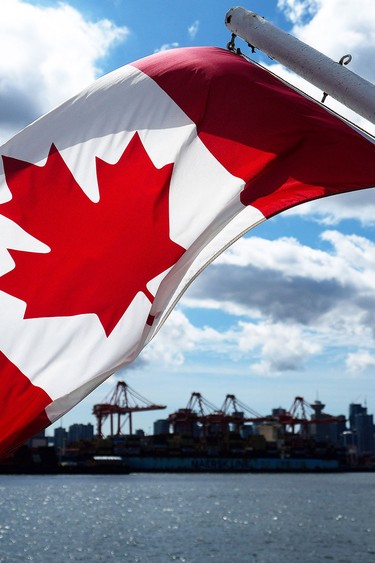There is much more behind the recently announced pursuit of a bilateral deal with Indonesia
Article content
The start of formal trade talks between Canada and Indonesia represent the most significant negotiations started by Prime Minister Justin Trudeau’s government and a strategic shift in the Liberals’ approach to Asia which, so far, has produced disappointing results by focusing on two of the region’s heavyweights, China and India.
International Trade Minister Mary Ng and her Indonesian counterpart, Muhammad Lufti, announced on June 20 that the two countries — the world’s 10th- and 16th-biggest economies, respectively, according to the World Bank — would begin formally negotiating a comprehensive economic partnership agreement. A deal would expand market access to the rapidly growing Southeast Asian archipelago that boasts a population of 270 million, more than six times that of Canada.
Canada’s pursuit of Indonesia is a product of the COVID-19 crisis, which highlighted the importance of a diverse set of suppliers. Governments are rethinking their trade relationships to avoid an over-reliance on China and supply-chain shortages. Asia, and particularly Southeast Asia, became the region on which advanced economies, such as Canada, set their sights.
Advertisement
This advertisement has not loaded yet, but your article continues below.
Article content

Canada’s exporters eye trade boost in recovery, but COVID-19 spillovers pose threats, report warns

China is getting the Liberals into video games

Housing market will be ‘first casualty’ of higher interest rates, says former Bank of Canada economist
Initiating talks with Indonesia on an agreement that would cover a broad range of goods and services signals Ng is going beyond simply securing favourable access for Canadian wheat, wood and machinery to the Indo-Pacific nation. “It’s strategic, long-term focused,” said Dan Ciuriak, a senior fellow at the Centre for International Governance Innovation, a think-tank based in Waterloo, Ont.
Indonesia is the largest member of the Association of Southeast Asian Nations (ASEAN), a 10-country bloc that competes with China, Japan, and India for international investment and trade.
Advertisement
This advertisement has not loaded yet, but your article continues below.
Article content
Canada has access to ASEAN by way of Vietnam and Singapore, fellow members of the Comprehensive and Progressive Agreement for Trans-Pacific Partnership (CPTPP), but a formal ASEAN agreement would be all the more powerful, said Stewart Beck, Canada’s former high commissioner to India from 2010 to 2014. If talks with Indonesia conclude positively, it could be Canada’s stepping stone into entering the lucrative region and a push away from traditional trading partners like the United States, he said.
“Japan was a jewel in the crown of CPTPP for Canada. Other countries are important but Japan has a huge market,” Beck said, adding that the agreement laid out ample opportunities for Canada in tariff restructuring and rules governing intellectual property. “Within the ASEAN region, Indonesia is the largest market and would be the jewel in a Canada-ASEAN FTA.”
Advertisement
This advertisement has not loaded yet, but your article continues below.
Article content
Since Trudeau’s election, the Liberal government has attempted to lock up agreements with the two largest economies in Asia, China and India, in an effort to diversify Canada’s trade but has famously failed.
There is a hard curtain coming down between China and the U.S.
Dan Ciuriak, a senior fellow at the Centre for International Governance Innovation
Negotiations that recently picked up between India and the European Union could mean a deal is in sight for Canada. However, because Canada and the U.S. are such close trading partners, with 70 per cent of Canadian exports flowing south of the border, and share security concerns over China, a bilateral deal with Asia’s dominant economy is likely out of the question for the foreseeable future.
“There is a hard curtain coming down between China and the U.S. and it would be practically impossible, diplomatically at this point, for Canada to actually enter a free trade agreement (with China) especially given the absolutely poisonous views that most Canadians have on China right now,” Ciuriak said.
Advertisement
This advertisement has not loaded yet, but your article continues below.
Article content
To be sure, the close partnership between the U.S. and Canada is also somewhat of a concern for Trudeau’s government, which has made export diversification a focus of its trade policy. The new North American trade agreement eased the tensions that existed during Donald Trump’s presidency, but threats remain, including Section 232 of the U.S. Trade Expansion Act, which was “not repealed or sidelined decisively” by the updated arrangement with the U.S. and Mexico, Ciuriak said. Trump exploited that little-used section of U.S. trade law to deem Canadian aluminum and steel imports a national security threat. “If Canadian aluminum exports to the U.S. is a national security threat to the U.S., anything can be a national security threat,” Ciuriak said.
Advertisement
This advertisement has not loaded yet, but your article continues below.
Article content
It would also make sense for Canada to act swiftly in asserting itself in the ASEAN due to its commodity-exporting twin from Down Under, Australia, Ciuriak said. The two countries export similar goods, but Australia has geography on its side because it’s so closely situated to Asia.
There is certainly opportunity for growth in the Indonesian market as total trade amounted to $3.4 billion last year, said Beck, which is just 3.3 per cent of total trade between Canada and China, which is itself a relative sliver of Canada’s trade with the United States. “There’s lots of potential,” Beck said.
The trade minister said as much on June 22 during a virtual ministers panel at the Asia Infrastructure Forum hosted in Singapore. “Looking at the world ahead, Canada sees a transformative opportunity to stimulate economic growth through investments in climate resilient and green infrastructure and to create millions of jobs in this process (in Asia),” Ng said.
• Email: bbharti@postmedia.com | Twitter: biancabharti
_____________________________________________________________
If you like this story sign up for FP Economy Newsletter.
_____________________________________________________________
Advertisement
This advertisement has not loaded yet, but your article continues below.
Trudeau’s Asia strategy is shifting after India and China deals proved difficult to tackle
2021-06-28 09:00:12






